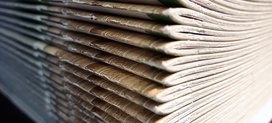"Optofluidic Dye Lasers Based on Holey Fibers: Modeling and Performance Analysis"
AUTHORS:
Rashid Z., Jonáš A., Buczyński R., Kiraz A.
ABSTRACT:
Holey optical fibers with air-filled openings can be turned into unconventional optofluidic components by selectively introducing a suitable liquid into their internal holes. Enhanced interaction between the light guided by the fiber and molecular species suspended in the confined liquid then forms the basis for designing unique optofluidic devices—filters, sensors, or lasers—whose operating characteristics are extremely sensitive to minute changes in the liquid composition. We present a comprehensive mathematical analysis of dye lasers based on suspended-core and hollow-core fibers, with aqueous solution of Rhodamine B dye injected into the internal holes of the fibers acting as the gain medium. Our model consists of coupled first-order differential equations that characterize the population of lasing levels and the variation of pump and signal laser powers along the fiber length in the steady state. We obtain optimum operating conditions of the proposed holey fiber dye lasers, such as the optimum fiber length and dye concentration, and compare their performance to conventional dye jet lasers. We conclude that the fiber variant of dye laser using the hollow-core fiber is superior in terms of low lasing threshold and high slope efficiency. The presented theoretical framework can find applications in designing practical holey fiber dye lasers serving as fiber-based alternatives of conventional dye jet lasers as well as novel biological/chemical sensors and bio-lasers.
Journal of Lightwave Technology, 2018, vol. 36(18), pp. 4114 - 4122
Originally published on - Aug. 17, 2018, 8:28 a.m.
Last update on - May 24, 2019, 1:35 p.m.
Publisher - Sekretariat IGF
PHOTO GALLERY

